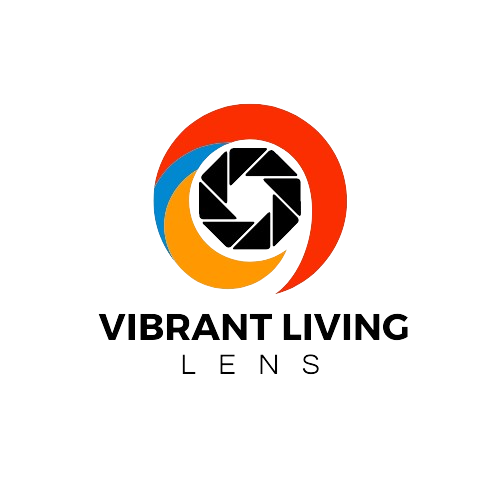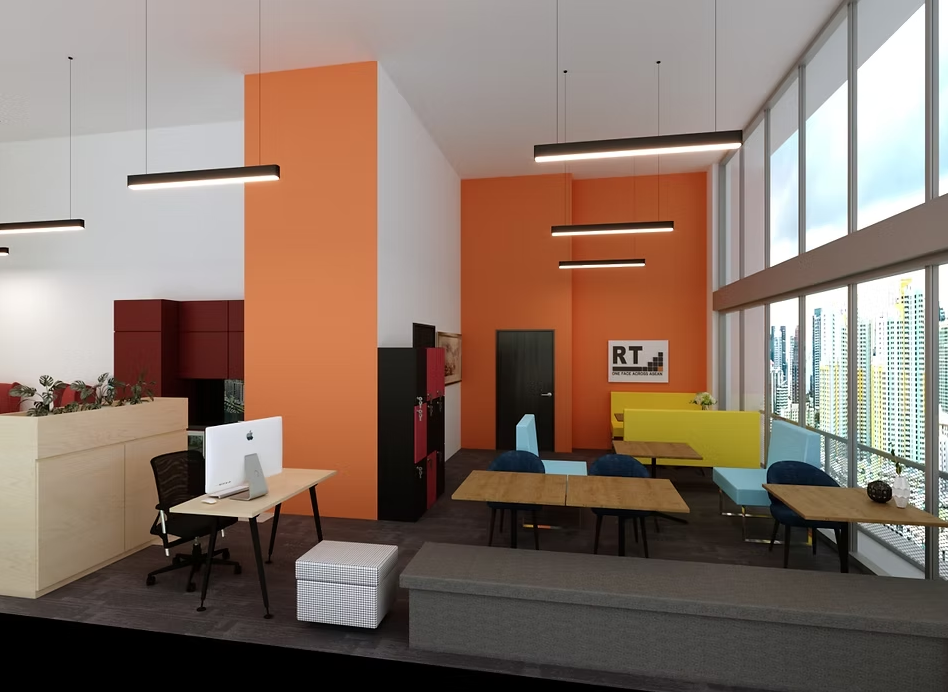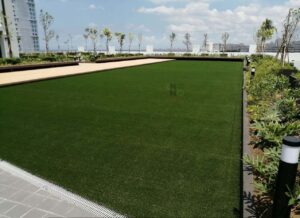The Growing Role of Interior Design in Modern Commercial Spaces
Interior design for commercial spaces has evolved far beyond simple aesthetics. Today, it plays a strategic role in shaping how businesses operate, influence clients, and support employee performance. A well-designed workspace enhances brand identity and boosts productivity while leaving a lasting impression on anyone who walks through the door. Companies are increasingly recognizing that their physical environment directly impacts customer engagement, collaboration, and even profitability. Whether it’s an office, retail store, or restaurant, every design element communicates something about the brand’s values and mission. The demand for innovative, sustainable, and functional designs continues to grow as companies compete to create inspiring spaces that reflect their identity and attract both customers and talent. Modern interior design for commercial spaces focuses not only on beauty but also on efficiency, comfort, and the human experience.
Understanding the Core Principles of Interior Design for Commercial Spaces
Creating an effective commercial space starts with a clear understanding of design principles that balance visual appeal with functionality. Every square foot must serve a purpose, whether it’s facilitating workflow, optimizing customer movement, or improving comfort. The layout is key—well-thought-out spatial planning ensures smooth navigation, encourages interaction, and maximizes productivity. Lighting also plays a crucial role, setting the tone and influencing mood throughout the environment. Colors and textures further define the space, creating either a calming or energizing effect depending on the brand’s character. Designers must also consider flexibility, especially in modern workspaces that require multipurpose areas. The ability to adapt a design as the business grows or shifts is a hallmark of excellent commercial interior design. Effective design aligns the business’s vision with practical use, ensuring that every design choice adds value to both the people and the brand.
Creating a Branded Experience Through Design
Interior design for commercial spaces goes beyond layout and color; it is a storytelling tool that expresses a company’s personality and mission. Every design decision—from wall finishes to furniture selection—should reflect the essence of the brand. For example, a tech company may lean toward sleek, minimalist designs with bold accent lighting to represent innovation, while a café might favor warm tones and organic materials to create a welcoming atmosphere. Color psychology plays a vital role in this process, influencing emotions and perceptions. Blue promotes calm and trust, while red stimulates energy and urgency. Incorporating branded elements such as logos, signage, and thematic patterns throughout the design ensures consistency and recognition. Industries across the board—hospitality, retail, corporate, and healthcare—use design to establish identity and connect with their target audience. The result is a cohesive, immersive environment that reinforces what the company stands for every time someone enters the space.
Modern Trends Defining Interior Design for Commercial Properties
The world of commercial interiors is constantly evolving, driven by technology, sustainability, and changing work dynamics. Open-plan layouts continue to dominate, encouraging collaboration while allowing flexibility for future redesigns. However, many companies now combine this with private pods or acoustic rooms for focused work. Another defining trend is biophilic design—the integration of natural elements like plants, wood textures, and natural light to boost well-being and creativity. Smart offices are also becoming standard, with technology embedded in lighting, temperature control, and furniture systems. Designers increasingly use eco-friendly materials and energy-efficient systems to align with global sustainability goals.
Some of the key commercial design trends today include:
- Open and hybrid workspace concepts for flexibility
- Nature-inspired biophilic design elements
- Integration of smart and automated systems
- Minimalist furniture with multifunctional use
- Use of recycled or upcycled materials
These trends not only enhance aesthetics but also align with business goals—improving employee satisfaction, reducing operational costs, and showcasing a company’s commitment to innovation and sustainability.
Designing for Productivity and Employee Well-Being
Interior design for commercial workspaces profoundly affects how people think, feel, and perform. A thoughtfully designed office layout enhances concentration, collaboration, and creativity by offering the right mix of open and private zones. Ergonomic furniture reduces physical strain and promotes comfort, allowing employees to work efficiently for longer periods. Lighting, both natural and artificial, influences energy levels and mood. Spaces that receive ample daylight tend to promote alertness and positivity. Acoustics also matter—too much noise can lead to distractions, while overly quiet areas may feel isolating. Designers must strike a balance by integrating materials that absorb sound without compromising style. Beyond aesthetics, design can nurture employee wellness through features like relaxation corners, greenery, and air-purifying plants. The result is a workspace that not only looks good but also contributes to better health, motivation, and performance.
Customer-Centric Design Strategies for Retail and Hospitality Spaces
Commercial spaces that cater to customers—such as retail stores, restaurants, and hotels—require a design strategy focused on experience. Interior design for commercial establishments must guide customer flow, encourage exploration, and influence decision-making. Strategic lighting highlights key products or areas, while layout and signage direct attention smoothly. The sensory experience—sight, sound, touch, and even scent—plays a big role in building emotional connections. For hospitality spaces, comfort and ambiance are critical; guests should feel welcomed and relaxed from the moment they arrive.
Customer-centric design involves:
- Creating an intuitive layout for easy navigation
- Using materials and colors that reflect the brand’s mood
- Ensuring comfort through seating, lighting, and spacing
- Integrating digital and interactive elements for engagement
- Designing focal points that drive visual interest
A well-executed commercial design can transform ordinary visits into memorable experiences, influencing customer loyalty and satisfaction.
Sustainability and Innovation in Commercial Interior Design
As environmental awareness grows, sustainability has become a defining factor in modern interior design for commercial properties. Businesses are increasingly turning to renewable, recycled, and eco-friendly materials to minimize environmental impact. Beyond materials, design innovation includes smart systems that reduce energy consumption and improve efficiency—such as automated lighting and temperature control. Designers are exploring creative ways to reuse existing elements instead of replacing them, cutting costs while reducing waste. Sustainable interiors also appeal to conscious consumers who value responsible business practices. Companies that adopt green design not only contribute to the environment but also enhance their brand image. The combination of innovation and sustainability results in spaces that are both future-ready and ethically aligned.
How to Choose the Right Interior Design Firm for Your Commercial Space
Selecting the right design firm can make or break a project’s success. Business owners should look for designers who understand their industry, target market, and operational needs. Reviewing a firm’s portfolio provides insight into their creativity, experience, and versatility. Communication is equally important—a good design partnership thrives on clear dialogue and mutual trust. During consultations, designers should listen carefully to your goals and budget, offering realistic timelines and transparent pricing. Some firms also specialize in particular types of spaces, such as corporate offices, retail stores, or hospitality venues, so aligning expertise with your project type is essential. A strong working relationship ensures that the final design meets both aesthetic and functional goals. Investing in a professional firm ultimately saves time, reduces costly revisions, and results in a design that supports long-term business success.
Common Mistakes to Avoid in Commercial Interior Design
Even with the best intentions, some commercial projects fail due to avoidable errors. One of the most common mistakes is neglecting user experience—focusing too much on appearance while ignoring comfort and practicality. Poor lighting, awkward layouts, and insufficient storage can quickly diminish a space’s effectiveness. Ignoring accessibility standards can also alienate certain customers or employees. Budget mismanagement and lack of future planning are other frequent pitfalls. A design that looks good today but cannot adapt to future growth can become costly to modify later. To avoid these mistakes, businesses should work with professionals who balance creativity with technical expertise and prioritize long-term usability.
The Future of Commercial Interior Design
The future of interior design for commercial spaces is dynamic, data-driven, and human-centered. Artificial intelligence, augmented reality, and virtual reality are transforming how designers visualize and plan spaces before construction begins. Flexible layouts are becoming the norm, with furniture and partitions designed for easy reconfiguration. Inclusivity and accessibility are now integral design priorities, ensuring that every space welcomes all users. Sustainability will continue to dominate, with materials and technologies evolving toward zero-waste and carbon-neutral standards. The commercial spaces of the future will blend functionality, comfort, and innovation to create environments that inspire productivity and strengthen brand connection.
Frequently Asked Questions (FAQ)
What makes interior design for commercial spaces different from residential design?
Commercial design focuses on functionality, branding, and user experience, while residential design prioritizes personal comfort and style.
How long does a typical commercial interior design project take?
The timeline depends on the project’s size, complexity, and scope, typically ranging from several weeks to a few months.
What are the most cost-effective ways to upgrade a commercial space?
Using modular furniture, efficient lighting, and sustainable materials can improve functionality and appeal without major renovations.
How can interior design support company culture and branding?
Design elements like color schemes, materials, and spatial layout can visually express company values and enhance employee connection to the brand.
What sustainability certifications are important for commercial interiors?
LEED (Leadership in Energy and Environmental Design) and WELL certifications are two major standards that recognize sustainable and health-focused designs.
Takeaway
Interior design for commercial spaces is more than decoration—it’s a powerful tool for productivity, brand identity, and customer satisfaction. By combining creativity with strategy, sustainability, and technology, businesses can create spaces that not only function efficiently but also inspire and connect. Whether designing a workspace, retail area, or hospitality environment, investing in thoughtful commercial design sets the stage for long-term growth and success.




